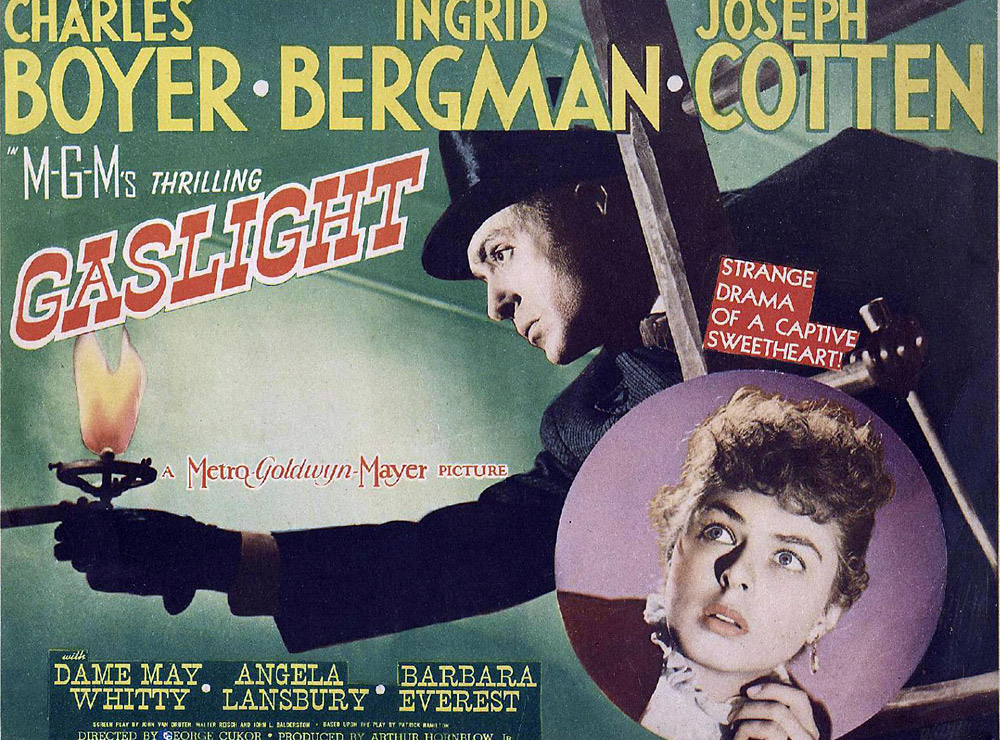
Domestic noir, or domestic suspense, is a subgenre that has been an integral part of the Noirwich programme since the inception of the festival. In 2016, I hosted a panel featuring Julia Crouch, the originator of the term ‘domestic noir’ which also featured Sarah Hilary and Christobel Kent.
Domestic noir originates in the early filmic ‘marriage thrillers’ popular around the time of WWII, a period characterised by death, loss, and, more pertinently to the plot of these thrillers, high instances of PTSD and other mental illnesses in men returning from war. Men really did come back with a whole range of personality changes, often manifesting in anxiety and paranoia, but also in higher levels of violence and aggression. Marriage thrillers, and more recently domestic noirs, ultimately question the centrality of the heterosexual relationship, finding it alien and strange rather than embedded and natural: spouses become unknowable, marriages shift beyond repair.
Gregory Cukor remade Patrick Hamilton’s 1938 play Gaslight in 1944, at the tail-end of WWII. Gaslight stars Ingrid Bergman as Paula, the niece of a famous, recently murdered opera singer. Paula soon marries Gregory, an abusive, violent con man, who isolates his wife and convinces her that she is losing her mind. The film is named for the dimming of the gaslights in their house (also the house of the dead aunt) as Gregory searches through the attic to look for valuables of the women he is later revealed to have murdered. As Maria Tatar explains in her book on the Bluebeard myth and the early marriage thriller, Secrets Behind the Door, Gregory convinces Paula that she is losing her sense of perception as ‘[t]errorised by light and sound, the distraught Paula becomes so powerful a symbol for a person being driven mad that the term “gaslight,’ used as a verb, has entered common parlance to signify deluding a person into thinking he or she is insane.’
domestic noir is a capacious, flexible category that encompasses realist writing about domestic violence, intersectional feminism, religion, mental illness, and women’s rights
In a year where Teen Vogue has been amongst the most vocal opposition to the Donald Trump presidency, Lauren Duca’s piece ‘Donald Trump is Gaslighting America’ became the most widely-read Teen Vogue article of all time. Duca introduced a whole new audience to the term, revealing the appetite for this metaphor in popular culture as domestic noir shows no sign of slowing down in terms of commercial success.
The domestic noir is a capacious, flexible category that encompasses realist writing about domestic violence, intersectional feminism, religion, mental illness, and women’s rights but that can also include fantastic and even supernatural storylines such as Sarah Pinborough’s #wtfending in Behind Her Eyes. Television, cinema, and even videogames have become saturated with domestic noir in the last five or so years, since the publication of Gillian Flynn’s phenomenal bestseller Gone Girl. Apple Tree Yard (written by Louise Doughty, a recent visitor to UEA), and The Replacement were prime time television on BBC in the last twelve months, whilst Her Story a videogame focussing on a six-day period of police interviews with the wife of a dead man who is strongly suspected of his murder, was a huge indie hit in 2015, selling over 100,000 copies.
As domestic noir continues to rise, we are very lucky to have Julia Crouch’s input again this year, this time in the form of a contribution to the edited collection on the subgenre that Henry Sutton and I have been working on over the last year. We will continue to programme authors who write fantastic domestic noir at Noirwich, and we can’t wait for readers’ responses to our book of essays on domestic noir, coming out with Palgrave Macmillan in 2018.
Read more at noirwich.co.uk
About Laura Joyce
Laura Joyce has published a crime novel The Museum of Atheism (Salt, 2012) and an experimental poetry collection The Luminol Reels (Calamari Press, 2014). Her forthcoming critical books are Luminol Theory (Punctum, 2017), Domestic Noir co-edited with Henry Sutton (Palgrave Macmillan, 2018), and Contemporary Deadly Landscapes: Occupying Ovid’s Locus Terribilis (Bloomsbury, 2019). She is a lecturer in Creative Writing and teaches on the Crime Fiction MA at the University of East Anglia.
You may also like...
Five building blocks for writing gripping crime fiction
In this article, writer and NCW Academy tutor Nicola Upson shares the five key elements to consider when writing a crime fiction story.

4th April 2024






